List of Largest Forest Tree in the World
- October 2, 2024
- 0 comment
Across the globe, some trees stand out for their sheer size and ancient presence, towering over forests and captivating the human imagination. These giants not only impress with their dimensions but also play vital roles in maintaining biodiversity, sequestering carbon, and supporting ecosystems. From the towering redwoods of California to the tropical giants of Borneo, these trees are testaments to nature’s power and resilience.
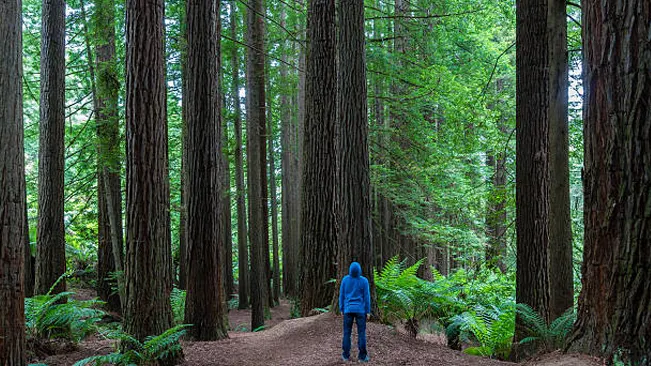
In this article, we will explore ten of the world’s largest forest trees, highlighting their unique features, ecological importance, and the need for their conservation.
1. Hyperion (Coast Redwood)
The coast redwood (Sequoia sempervirens) is the tallest tree species in the world, thriving in the foggy and moist coastal rainforests of northern California. Hyperion, the tallest known living tree, was discovered in 2006 and stands at an incredible 379.7 feet.
Scientific Name: Sequoia sempervirens
Location: California, USA
Height: 379.7 feet (115.7 meters)
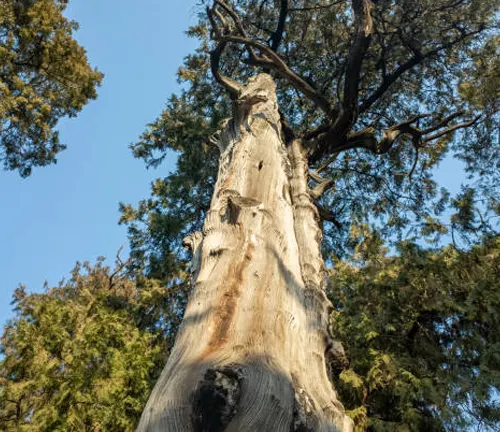
These trees are fast-growing and can live for over 1,000 years. However, they face threats from climate change and deforestation, making their preservation crucial.
2. General Sherman (Giant Sequoia)
The giant sequoia (Sequoiadendron giganteum) is the largest tree by volume. General Sherman, found in Sequoia National Park, is a massive 275 feet tall with an impressive trunk volume of 52,500 cubic feet.
Scientific Name: Sequoiadendron giganteum
Location: Sequoia National Park, California, USA
Height: 275 feet (83.8 meters)
Trunk Volume: 52,500 cubic feet
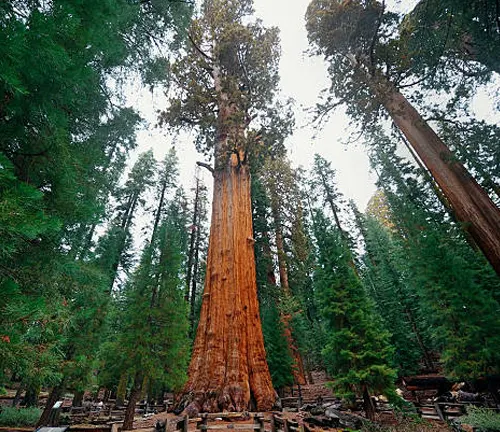
These ancient trees, some over 2,000 years old, continue to grow. Their thick bark protects them from fire, and fire itself plays a key role in their reproduction by opening their cones.
3. Centurion (Mountain Ash)
The mountain ash (Eucalyptus regnans), or giant ash, is the tallest flowering plant on Earth. Centurion, located in Tasmania, is the tallest known tree in the Southern Hemisphere at 327.5 feet.
Scientific Name: Eucalyptus regnans
Location: Tasmania, Australia
Height: 327.5 feet (99.6 meters)

These trees grow rapidly and are crucial to their ecosystems, providing habitat for many species. Despite their importance, mountain ash forests are threatened by frequent bushfires and logging.
4. Tane Mahuta (Kauri Tree)
Tane Mahuta, or “Lord of the Forest,” is the largest known living kauri tree (Agathis australis) in New Zealand. It stands 168 feet tall and holds significant cultural importance for the Māori people.
Scientific Name: Agathis australis
Location: Waipoua Forest, New Zealand
Height: 168 feet (51.5 meters)
Trunk Volume: 516 cubic meters
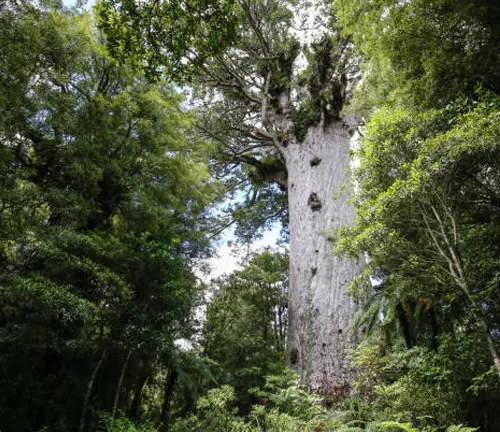
Kauri trees are slow-growing and can live for over 2,000 years. However, they are under threat from kauri dieback disease, which is causing widespread destruction in kauri forests.
5. Doerner Fir (Douglas Fir)
The Douglas fir (Pseudotsuga menziesii) is one of the tallest trees in North America and is valued for its timber. Doerner Fir, standing at 327 feet in Oregon, is the tallest known Douglas fir.
Scientific Name: Pseudotsuga menziesii
Location: Oregon, USA
Height: 327 feet (99.7 meters)
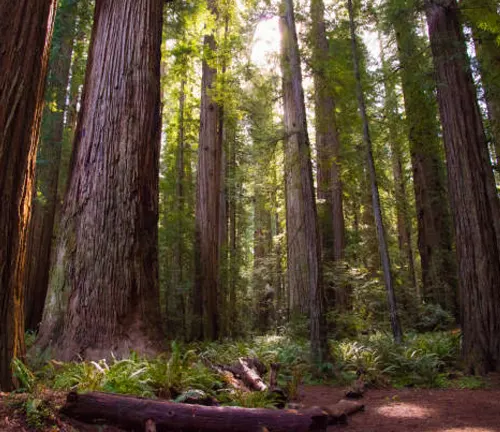
These trees are essential components of temperate rainforests, providing habitat for wildlife and stabilizing ecosystems. Sustainable forestry practices are crucial for preserving this species, as logging continues to pose a threat.
6. Stratosphere Giant (Coast Redwood)
Stratosphere Giant, another coast redwood, was once the tallest known tree before Hyperion was discovered. Located in Humboldt Redwoods State Park, California, it stands at 372 feet.
Scientific Name: Sequoia sempervirens
Location: Humboldt Redwoods State Park, California, USA
Height: 372 feet (113.1 meters)
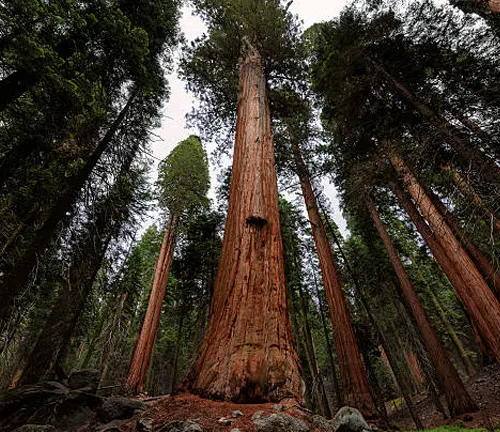
Like other redwoods, it thrives in the moist, coastal environment and can live for over 2,000 years. These trees are vital for carbon sequestration and play an essential role in their ecosystems.
7. Menara (Yellow Meranti)
Menara is recognized as the tallest known tropical tree in the world, reaching an impressive height of 330 feet. It thrives deep within the rainforests of Borneo, Malaysia.
Scientific Name: Shorea faguetiana
Location: Danum Valley, Borneo, Malaysia
Height: 330 feet (100.8 meters)

The yellow meranti (Shorea faguetiana) is highly valued for its timber, but it is also a crucial part of Southeast Asia’s rainforests, providing habitat for endangered species. Deforestation and logging threaten these ecosystems, making the conservation of trees like Menara critical to maintaining biodiversity.
8. Árbol del Tule (Montezuma Cypress)
Árbol del Tule, a Montezuma cypress (Taxodium mucronatum), is the widest tree in the world, with a trunk circumference of 137.8 feet.
Scientific Name: Taxodium mucronatum
Location: Oaxaca, Mexico
Height: 116 feet (35.4 meters)
Trunk Circumference: 137.8 feet (42 meters)
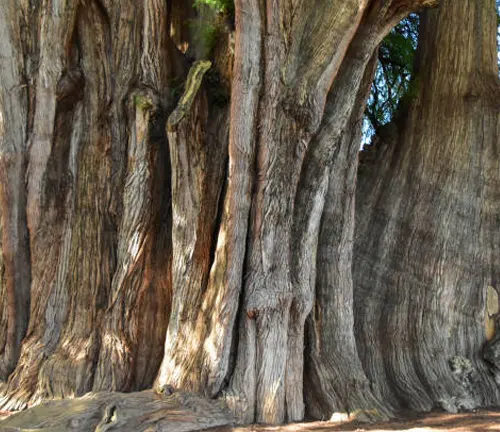
Found in Oaxaca, Mexico, this tree is over 1,500 years old and holds great cultural significance for the region. Montezuma cypress trees grow along riverbanks and wetlands, where they play a vital role in stabilizing soil and preventing erosion.
9. The President (Giant Sequoia)
The President, located in Sequoia National Park, is one of the largest known giant sequoias by volume. It stands at 241 feet with a trunk volume of 45,000 cubic feet and is estimated to be over 3,200 years old.
Scientific Name: Sequoiadendron giganteum
Location: Sequoia National Park, California, USA
Height: 241 feet (73.5 meters)
Trunk Volume: 45,000 cubic feet
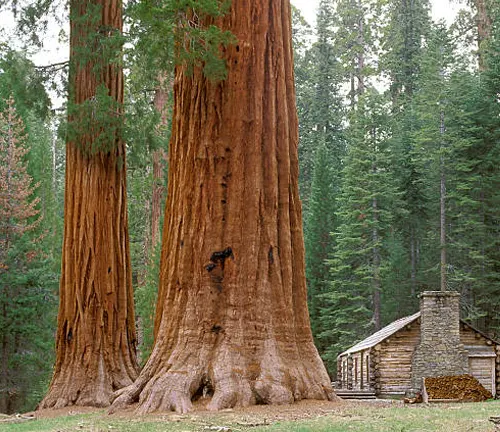
Like other sequoias, The President relies on fire for reproduction, and its thick bark protects it from damage during wildfires.
10. Raven’s Tower (Sitka Spruce)
Raven’s Tower is the tallest known Sitka spruce (Picea sitchensis), standing at 317 feet. These trees are native to the Pacific Northwest and thrive in coastal environments, where they play an essential role in stabilizing ecosystems and preventing erosion.
Scientific Name: Picea sitchensis
Location: Prairie Creek Redwoods State Park, California, USA
Height: 317 feet (96.7 meters)
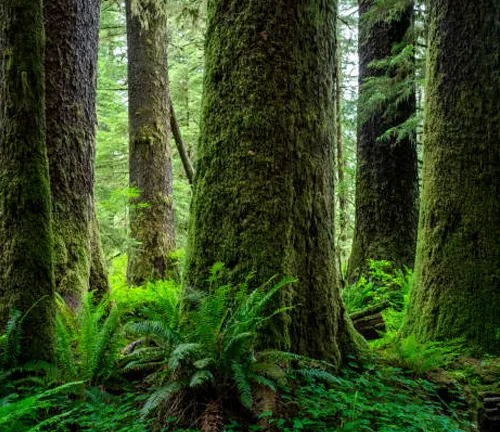
Sitka spruce wood is highly valued for its strength and lightweight properties, often used in construction and instrument-making.
Table of the 10 tallest trees:
| Tree | Species | Location | Height (ft) | Ground Circumference (ft) | Trunk Volume (cubic ft) |
|---|---|---|---|---|---|
| Hyperion | Sequoia sempervirens | Redwood National Park, California, USA | 379.7 | Not available | Not available |
| General Sherman | Sequoiadendron giganteum | Sequoia National Park, California, USA | 275 | 102.6 | 52,508 |
| Centurion | Eucalyptus regnans | Tasmania, Australia | 327.5 | Not available | Not available |
| Tane Mahuta | Agathis australis | Waipoua Forest, New Zealand | 168 | Not available | 516 cubic meters |
| Doerner Fir | Pseudotsuga menziesii | Oregon, USA | 327 | Not available | Not available |
| Stratosphere Giant | Sequoia sempervirens | Humboldt Redwoods State Park, California | 372 | Not available | Not available |
| Menara | Shorea faguetiana | Danum Valley, Borneo, Malaysia | 330 | Not available | Not available |
| Árbol del Tule | Taxodium mucronatum | Oaxaca, Mexico | 116 | 137.8 | Not available |
| The President | Sequoiadendron giganteum | Sequoia National Park, California, USA | 241 | 93 | 45,148 |
| Raven’s Tower | Picea sitchensis | Prairie Creek Redwoods State Park, USA | 317 | Not available | Not available |
Conclusion
The world’s largest trees are not only magnificent to behold but also critical to the health of our planet. From the towering redwoods of California to the culturally significant Árbol del Tule, these trees provide habitat, stabilize ecosystems, and store immense amounts of carbon. However, many of these giants face threats from deforestation, climate change, and disease.
Conservation efforts are essential to protect these natural wonders. By supporting sustainable forestry and raising awareness about the importance of these trees, we can ensure that they continue to stand tall for future generations. The largest trees on Earth are reminders of nature’s power, and they deserve our admiration and protection.
Frequently Asked Questions (FAQ’s)
- What is the tallest tree in the world?
The tallest tree in the world is Hyperion, a coast redwood (Sequoia sempervirens), standing at 379.7 feet (115.7 meters). It was discovered in 2006 in California’s Redwood National Park. - How old is General Sherman, the largest tree by volume?
General Sherman, a giant sequoia (Sequoiadendron giganteum), is estimated to be over 2,000 years old. Its massive trunk makes it the largest tree in the world by volume. - What is the largest tree species by wood volume?
The giant sequoia (Sequoiadendron giganteum) holds the record for the largest trees by volume, with General Sherman being the largest, boasting a trunk volume of over 52,500 cubic feet. - Where can you find the tallest flowering tree in the world?
The tallest flowering tree, Centurion, is a mountain ash (Eucalyptus regnans) located in Tasmania, Australia. It stands at 327.5 feet (99.6 meters). - What is the widest tree in the world?
The Árbol del Tule, a Montezuma cypress (Taxodium mucronatum) in Oaxaca, Mexico, holds the record for the widest trunk with a circumference of 137.8 feet (42 meters). - Why are coast redwoods so tall?
Coast redwoods grow exceptionally tall due to the ideal climate they thrive in—coastal fog, abundant rainfall, and nutrient-rich soils provide perfect growing conditions for these trees. - What threats do these giant trees face?
Many of the world’s largest trees face threats from deforestation, logging, climate change, and diseases. Specific species, like kauri trees, are vulnerable to diseases such as kauri dieback. - How do giant sequoias survive wildfires?
Giant sequoias have thick, fire-resistant bark and rely on wildfires to clear the forest floor and open their cones, allowing new seeds to grow. Fires play a critical role in their reproduction. - What is the significance of Tane Mahuta to the Māori people?
Tane Mahuta, a kauri tree in New Zealand, is known as the “Lord of the Forest” and holds significant cultural and spiritual value for the Māori people. It is deeply embedded in their mythology and traditions. - Can these giant trees be visited by the public?
Yes, many of these trees, such as General Sherman, Hyperion, and Árbol del Tule, are located in protected national parks and can be visited by the public. However, certain trees like Hyperion are in remote areas to limit human impact.

Jordan Blake
Forestry AuthorJordan Blake is a forestry expert with over 15 years of experience in arboriculture and community education. Passionate about sustainable forest management, Jordan regularly writes for Forestry.com and Tree Care Magazine. Holding certifications in tree health assessments and urban forestry management, Jordan conducts workshops to educate the public on sustainable practices. Jordan has a degree in Environmental Science and enjoys hiking and photography in their free time.


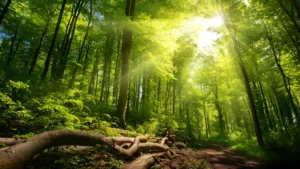
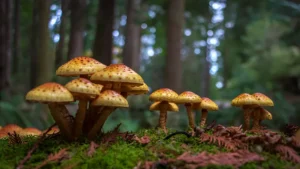

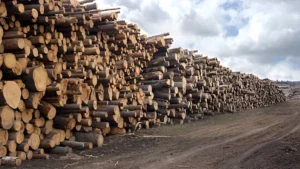
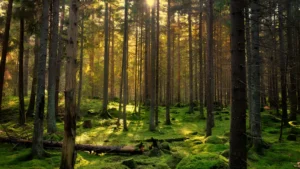

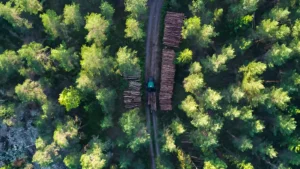


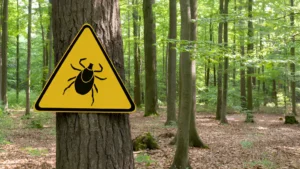

Leave your comment